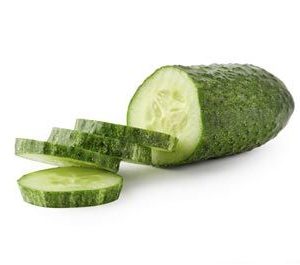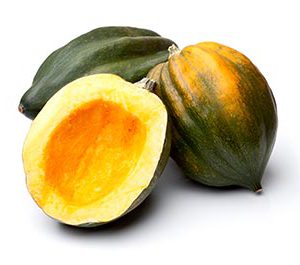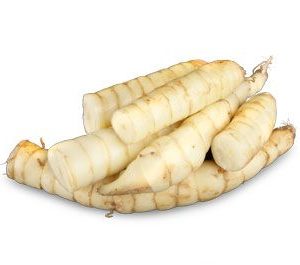Grown all over the world and enjoyed as a versatile ingredient for various dishes, broccoli is a member of the cruciferous family, along with cauliflower, kale and cabbage. It has a light green stalk topped with dark green florets tightly clustered together, giving it the appearance of a tree.”
Broccoli means “little arms” or “little shoots” in Italy, where it’s believed to originate from. Every part of this vegetable is edible — from its stem to the gray-green leaves that surround its head, which are usually removed before the broccoli is sold. You can eat it raw in a salad or in a crudités platter, puree it to make soup or serve it sautéed, grilled, steamed, roasted or stir-fried.
The flavor of broccoli depends on which part you’re using and how you prepare it. The florets tend to have a stronger taste than the stem, but they’re milder compared to the leaves. Cooked broccoli is also sweeter than raw. Additionally, the method of cooking affects the compounds found in this vegetable; One study showed that steaming is the best way to preserve broccoli’s nutrients.
To determine if a broccoli is fresh, look for tightly closed and springy florets as well as thin stalks. Avoid those with flowering heads, yellowing florets or thick stems, as they indicate maturity. Fresh broccoli can be kept for up to five days when wrapped in a reusable or perforated bag and stored in the crisper of your fridge. Meanwhile, cooked broccoli can last for up to three days in the refrigerator.
Health Benefits of Broccoli
Broccoli is a nutritional powerhouse of vitamins, minerals and bioactive phytochemicals. One of its major chemical constituents is sulforaphane, which is found to have antioxidant, anti-inflammatory, anticancer, antimicrobial, antiaging, antidiabetic and neuroprotective properties.
An article published in the Experimental and Clinical Sciences Journal highlights the chemoprotective property of sulforaphane against various cancers, including breast, colon, stomach and lung cancer. It may also help lower the risk for diabetes, cardiovascular disease and osteoporosis.
The flavonoids kaempfrol and quercetin contribute to the anti-inflammatory, cardioprotective and anticancer actions of broccoli. In terms of vitamins and minerals, broccoli is an excellent source of vitamin A, a necessary nutrient for eye health, and vitamin C, which plays a role in various biological functions in the human body, including the biosynthesis of collagen and neurotransmitters.
Other high-amount, health-boosting nutrients present in broccoli include vitamins K and B6, folate, potassium and manganese. For more information about the nutritional value of this cruciferous vegetable, check out the nutrition facts table below:
| Broccoli Nutrition Facts
Serving Size: 3.5 ounces (100 grams), raw |
||
| Amt. Per Serving |
% Daily Value* |
|
| Calories | 34 | |
| Total Fat | 0.37 g | |
| Saturated Fat | 0.114 g | |
| Trans Fat | ||
| Cholesterol | 0 mg | |
| Sodium | 33 mg | |
| Total Carbohydrates | 6.64 g | |
| Dietary Fiber | 2.6 g | |
| Sugar | 1.7 g | |
| Protein | 2.82 g | |
| Vitamin A31 mcg | Vitamin C | 89.2 mg |
| Calcium47 mg | Iron | 0.73 mg |
Studies Done on Broccoli
Broccoli has been widely studied for its cancer-fighting potential over the years. One 2013 study, published in the Topics in Current Chemistry, found that the sulforaphane in broccoli may help stimulate the detoxification of airborne toxins and aflatoxins, a type of poisonous toxin produced by certain kinds of mold, thereby protecting exposed individuals from associated health risks like cancer.
Another study published in the Nutrition and Cancer evaluated the anticancer property of broccoli on smokers and nonsmokers. The study involved a group of 10 smokers and 10 nonsmokers, both of which were given 200 grams of broccoli or put under a controlled diet within 10 days. Results showed that DNA strand breaks “decreased significantly after the broccoli diet in smokers as well as in nonsmokers,” highlighting the importance of eating broccoli for protecting cells against DNA damage.
Broccoli Fun Facts
The use of broccoli as a nutritional food source dates back to the Roman Empire, where it was considered very valuable. Thomas Jefferson, an American Founding Father who was also an avid gardener, began experimenting with broccoli seeds he brought home from in Italy as early as the late 1700s. However, it wasn’t until the 1920s that this vegetable became popular in the United States.
Summary
Broccoli is not just a versatile ingredient. It’s proven to be beneficial for your health too, as it contains a wide range of bioactive compounds, vitamin and minerals, including sulforaphane, kaempfrol, quercetin, vitamin C, vitamin K and potassium, to name a few. These powerful compounds work together to help reduce your risk of health disorders, such as cancer and cardiovascular disease.
Every part of broccoli can be eaten, from the florets to the stalk. There are many ways to enjoy this vegetable: Toss it into salads, steam and serve it with dip, puree it into soup or serve it as a side dish to complement recipes with strong flavors.







Reviews
There are no reviews yet.